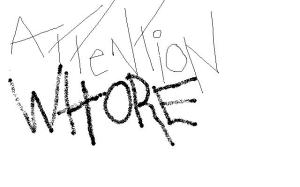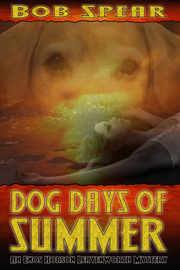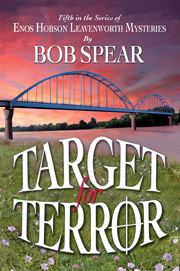In advertising, it’s said, 80% of the effectiveness of your ad depends on your headline. Brian Clark of Copyblogger says
Your headline is the first, and perhaps only, impression you make on a prospective reader. Without a compelling promise that turns a browser into a reader, the rest of your words may as well not even exist. From a copy writing . . . standpoint, writing great headlines is a critical skill.
Book titles, meant to entice a reader into a purchase, need to be even more effective than headlines. But book titles often seem like an afterthought, or maybe a title the author has been carrying around in their head for many years. Titles can be chosen for any number of reasonable or completely frivolous reasons.
Selecting the title and subtitle will be the single-most important piece of copy writing you will do for your book. A great title will not sell a bad book but a poor title will hide a good book from potential customers. Both your title and subtitle must be a selling tool. They are the hook that help sales.
For instance, F. Scott Fitzgerald’s The Great Gatsby was originally called Trimalchio in West Egg. Don’t you wonder what the book’s fate would have been if Fitzgerald had used his original name?
The Best of the Worst Book Titles
The Bookseller runs an annual award, the Diagram Prize, for the oddest book titles of the year. Here’s a list of the finalists for the 2009 award:
- David Crompton’s Afterthoughts of a Worm Hunter (Glenstrae Press)
- James A Yannes’ Collectible Spoons of the Third Reich (Trafford)
- Daina Taimina’s Crocheting Adventures with Hyperbolic Planes (A K Peters)
- Ronald C Arkin’s Governing Lethal Behavior in Autonomous Robots (CRC Press)
- Ellen Scherl and Maria Dubinsky’s The Changing World of Inflammatory Bowel Disease (SLACK Inc)
- Tara Jansen-Meyer’s What Kind of Bean is This Chihuahua? (Mirror)

The Winner
I’m sure you’ll be interested to know that Daina Taimina’s Crocheting Adventures with Hyperbolic Planes took home the prize. If you think the book wasn’t worthy, consider the Product Description on Amazon: “Crocheting Adventures with Hyperbolic Planes is a work of gargantuan proportions whose influence will be measured for decades to come.” So there.
Book Titles Are Serious Business
Rachelle Gardner wrote a useful post with some ideas on how to brainstorm your book titles, and she has several suggestions for practical exercises you can do. Here’s one example:
Nothing is off limits—write down anything you can think of that conveys anything about your book. Use visual words that suggest a scene. Other words that evoke an emotion. A sensation. A location. A question. You should have at least 100 words.
But here’s my idea. Once you get finished finding exactly the right title, stop and think about the world in which your book will be sold. Particularly for nonfiction books, one of the chief ways people will find your book is through search, specifically through online searches.
Since we know that careful study and use of
keywords can be influential in how people find our books (as well as our blog posts, articles and other online writing) we can use this information to help guide us to better book titles.
Titles for Humans and for (Search) Robots
Here are some examples of titles that work well for both of your constituencies: the person browsing in a bookstore or at an online retailer, and the robots sent out by search engines to catalog the web. Take a look at these titles and see if you can spot the pattern, the way they were carefully crafted on both ends.
The Devil’s Casino: Friendship, Betrayal, and the High Stakes Games Played Inside Lehman Brothers
In Command of History: Churchill Fighting and Writing the Second World War
Black Wave: A Family’s Adventure at Sea and the Disaster That Saved Them
Bright-Sided: How the Relentless Promotion of Positive Thinking Has Undermined America
Dancing in the Dark: A Cultural History of the Great Depression
The First Tycoon: The Epic Life of Cornelius Vanderbilt
Golden Dreams: California in an Age of Abundance
The Last Empress: Madame Chiang Kai-Shek and the Birth of Modern China
Nothing to Envy: Ordinary Lives in North Korea
The Snakehead: An Epic Tale of the Chinatown Underworld and the American Dream
The Wilderness Warrior: Theodore Roosevelt and the Crusade for America
In each case, a punchy, evocative title grabs attention and attempts to create curiosity, suspense or interest in the reader. Then comes the subtitle. These are typically longer than the title and have two equally important roles to play:
- The subtitle has to adequately convey, at a glance, what the actual subject matter and scope of the book is.
- The subtitle also has to contain the one or two critical keywords that best represent your book.
While the title addresses the human browser, the subtitle has to flag the search engine robots with keywords that will turn up in any relevant search on your topic. Look through the list above again. In each case, the punchy title is followed by
keyword-rich descriptions. Each subtitle is far more specific than its corresponding title. In fact, without the subtitles, many of these titles would tell you almost nothing about the book they were attached to.
As almost all book discovery moves to digital databases and online searches, more and more of your success will rely on your ability to alert searchers—both robotic and human—to the worthiness of your book when they search on relevant keywords for your subject area.
These are the same keywords to use in filling out bibliographic information for
Books in Print on
Bowkerlink, to incorporate in your catalog copy and any descriptions of the book you write, or any press materials, media releases or sales copy.
This combination of title and subtitle gives you the greatest chance of your book being found by exactly the right people. Put some really good thinking behind your choices—it will serve you well.
Takeaway: For nonfiction books, combine an attention-getting short title with a long, specific and keyword-rich subtitle to achieve the best discoverability for your book.
This is a reprint from Joel Friedlander‘s The Book Designer.










